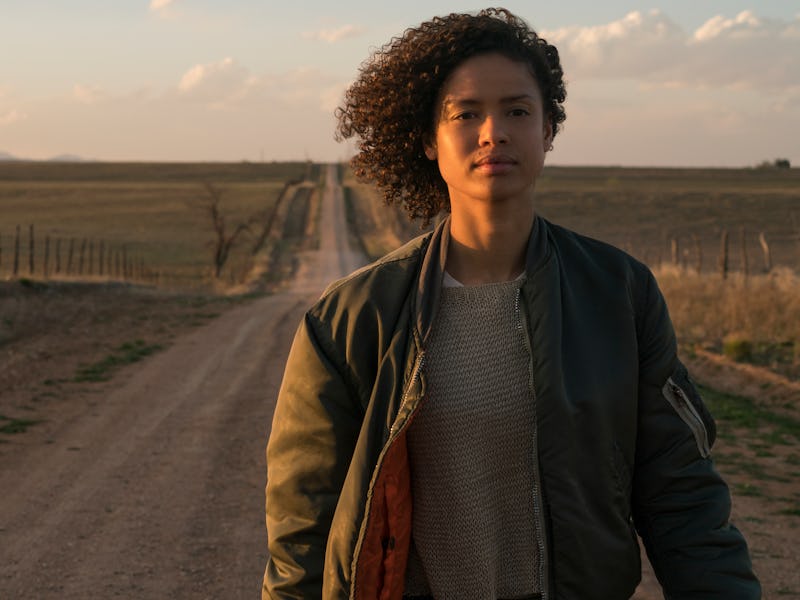If you’re tired of sprawling superhero franchises, a Netflix indie has the antidote
Forget cinematic universes. Sit down for a fascinating and heartfelt standalone superhero story.

No one makes superhero movies anymore unless they’re part of a cinematic universe, or at least have the potential to be. Even the most obscure comic book adaptations often come weighted with the expectation that they’ll launch a wide-ranging world of superhero adventures, regardless of whether the material warrants it. That’s fine for huge companies like Marvel and DC, but it squeezes out the small-scale storytelling that’s equally essential to the genre.
That makes Julia Hart’s Fast Color a rare achievement, and a must-watch before it leaves Netflix on December 10. It’s an intimate superhero story that hints at a larger world, telling a personal tale within a grand sci-fi context. Director and co-writer Hart offers hints of potential grander adventures for her characters, but the movie stands on its own. It’s the kind of rich character drama that gets obliterated in most blockbuster filmmaking, and it’s awe-inspiring in its own right.
Hart’s special-effects budget may have been minimal, but she makes up for it with breathtaking performances from her talented cast, led by Gugu Mbatha-Raw as recovering addict Ruth. Ruth has been on the run for years, hiding her volatile powers that cause localized earthquakes when she experiences seizures. With its vaguely retro-futurist aesthetic and synth-driven score by Rob Simonsen, Fast Color recalls vintage movies like Firestarter and Scanners about superpowered outcasts targeted by state and corporate interests. Ruth is introduced busting out of an abandoned warehouse with rope tied around her wrists, evidence of the voluntary restraints she employs to keep others safe from her powers.
She’s also carrying a sobriety chip, proof that she’s been clean for 11 months, as she tells her mother, Bo (Lorraine Toussaint), when she returns to the rural family home. That seems like a good development, but numbing herself kept Ruth’s dangerous powers at bay, and she puts both Bo and her own young daughter, Lila (Saniyya Sidney), at risk by being around them. Bo and Lila have powers too, as do all the women in their family. They can disintegrate and reconstruct inanimate objects, something that Ruth also used to be able to do before her seizures developed.
The most important thing to Ruth is repairing her relationship with her mother.
At first, it seems like those abilities are little more than parlor tricks, especially since they can only mend things that were whole to start with. “If something’s broken, it stays broken,” Bo says, although Ruth doesn’t quite believe it. There’s been no rain for eight years in this undefined future, and Ruth still remembers Bo’s stories of the woman who could unmake and remake the sky.
Fast Color is the rare post-apocalyptic movie infused with hope, as embodied in Ruth’s determination and focus. When she dreams of a better world, she follows through with that vision. This isn’t a story about an addict who relapses or lashes out at the people who care for her. Ruth is telling the truth when she says she’s clean, and the serenity she derives from reciting the familiar Alcoholics Anonymous mantra carries her forward.
“We’re not superheroes,” Ruth tells Lila. “We’re just trying to get by.” Hart never loses sight of that grounded view, even as Ruth allows herself to aim a little higher. She may have the power to save the world, but the most important thing to her is repairing her relationship with her mother and establishing a relationship with the daughter she barely knows. Much of Fast Color is quiet and contemplative, with the three women working around the house, recounting past troubles, and tentatively discussing the future. There’s urgency and suspense as federal agents close in, but there are no big action scenes, no physical battles between good and evil. The struggles are internal.
Much of Fast Color is quiet and contemplative.
That doesn’t make them any less riveting, and Mbatha-Raw gives one of her best performances as the damaged yet open-hearted Ruth. She comes home not only because she has nowhere else to go, but because it’s the only place she actually wants to be. She’s vulnerable and powerful, exhibiting as much indomitable will in conquering her addictions as she does in harnessing her abilities. Toussaint and David Strathairn’s local sheriff balance Mbatha-Raw with a sense of weary resignation, but even the older, supposedly wiser characters are surprised by what Ruth can accomplish.
Not long after it was released, Fast Color was put into development as a series at Amazon. While that project appears to have vanished into the ether, Hart and co-writer Jordan Horowitz certainly introduce enough narrative threads to be explored on an ongoing basis. Yet Fast Color feels almost precious, a delicate story that exists in its own heartfelt domain. Maybe it could blossom into a cinematic universe, but there’s something special about keeping it self-contained.
Fast Color is streaming on Netflix until December 10.